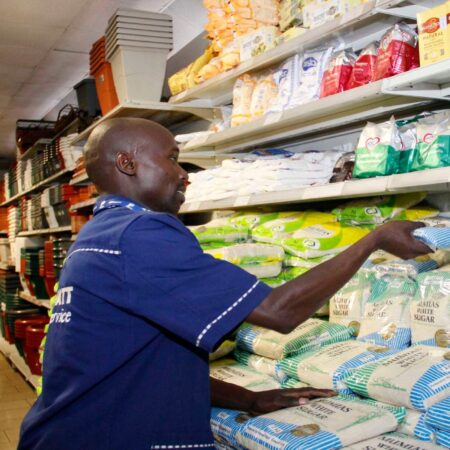The East African region has a combined GDP of US$ 880 billion and a population of 437 million.
Despite this attractive combination, the economies of East Africa are still highly fragmented with low intra-regional trade and investment levels. To make matters worse, the trade and investment have been declining.
The region’s biggest economies of Kenya and Ethiopia have an annual bilateral trade worth less than US$ 100 million since they barely trade with each other.
While these two economise paint a rough picture of the trade imbalances in the region, trading within the East African Community (EAC) is higher with exports peaking in 2013 at US$ 3.5 billion. Again, unfortunately, by 2017 the exports volumes had declined with earnings reducing by 31 per cent to just US$ 2.4 billion.
The lack of trade integration poses a serious impediment to the future development of the region despite the fact that the East African region has become the fastest-growing sub-region on the continent.
East Africa’s economy is consumption-led creating a significant domestic demand that is being met by imports rather than regional production. This has increased trade deficits which are 10 to 20 per cent of GDP. To address this, the region needs to shift to an investment- or technology-led dynamism.
With the signing of the African Continental Free Trade Area (AfCFTA), the East African region stands to benefit immensely. The AfCFTA creation could help inject new momentum and move the region from stagnation and the perception of the 1980s and 1990s where it was regarded as one of the poorest and least dynamic economies in the world.
The AfCFTA offers hope of a revival of both regional and intra-African trade to boost trade and development in East Africa. It could create more than 2 million new jobs and boost the East African trade by between US$ 737 million and US$ 1.1 billion.
According to the United Nations Economic Commission for Africa (ECA) the lower cost for goods and services from the implementation of the AfCFTA will result in welfare gains amounting to US$ 1.8 billion for the region.
ECA adds that many of the new employment opportunities are likely to emerge in sectors where there is a heavy predominance of female labour, thereby contributing to the economic empowerment of women in the region.
On attracting FDI, ECA notes that the larger regional market will incentivize greater investment by national and multinational investors which could open doors to the emergence of regional value chains (RVCs) and stronger, more resilient, economies.
Essentially, the AfCFTA will accelerate the industrialization of the region, as manufacturing will be among the principal beneficiaries from the increase in intraregional trade and investment.
Currently, EAC adds, manufacturing firms in East Africa are typically operating at around 20 per cent to 40 per cent below their potential.
“With so much unmet consumer demand, this is unacceptable. The heavy reliance on manufactured imports also results in many missed opportunities to develop deeper regional value chains, both within East African and with the rest of the continent.”
With East Africa’s population growth being among the highest in the world, the needs of the 10 million more people every year have to be met.
Food insecurity has to be addressed given the large climatic variations and diverse topography within East Africa. A large share of this demand could be met by greater intra-regional and intra-African trade.
ECA notes that this is already happening with the 2016/17 food shortages in Kenya being largely relieved by higher imports from neighbouring Uganda and Tanzania.
By removing the barriers to such trade, there will be greater food security and accelerated growth in a crucial sector upon which the livelihoods of two-thirds of the region’s population still depends.
The service industry will also benefit greatly with the creation of new opportunities in high value-added services trade, helping countries achieve their goals of economic diversification and structural transformation.











